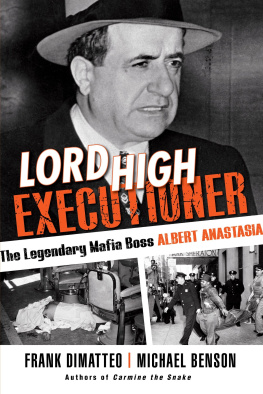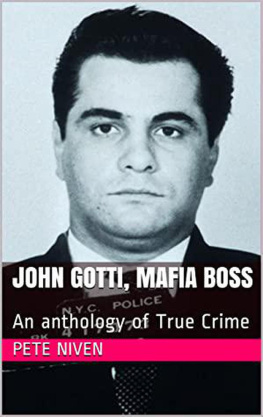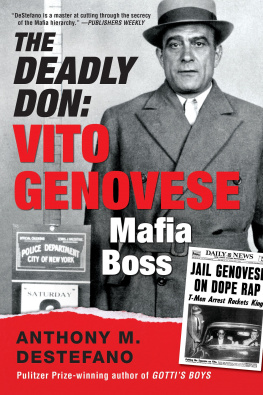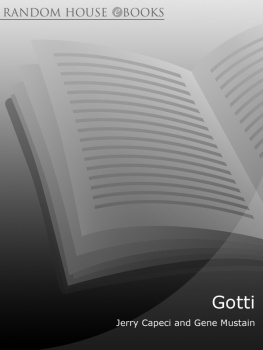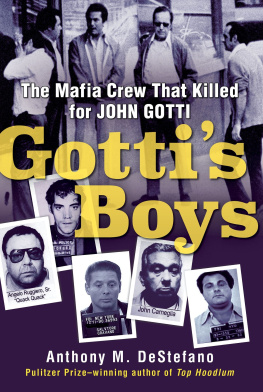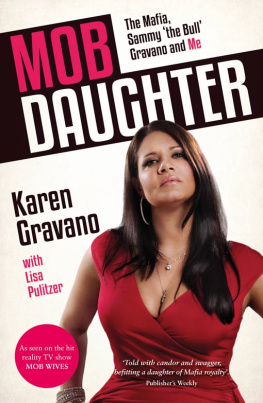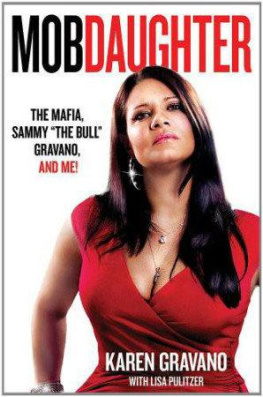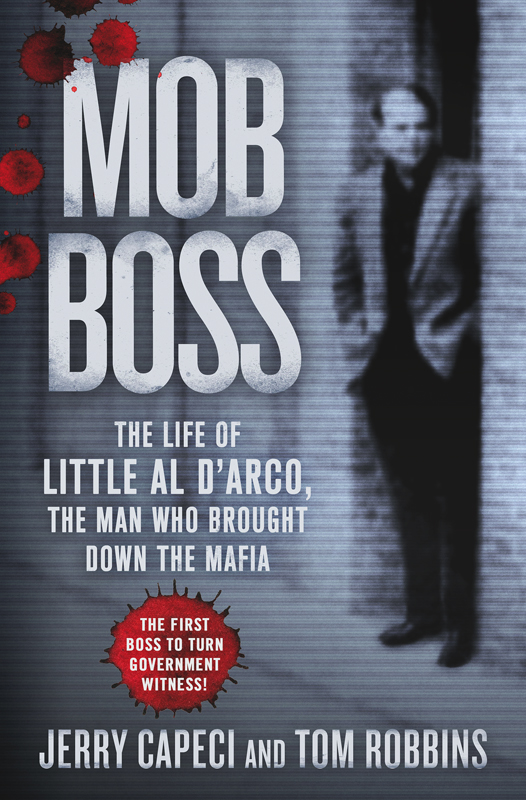
The author and publisher have provided this e-book to you for your personal use only. You may not make this e-book publicly available in any way. Copyright infringement is against the law. If you believe the copy of this e-book you are reading infringes on the authors copyright, please notify the publisher at: us.macmillanusa.com/piracy.
For Hap Hairston and Bill Boyle, two great tabloid editors who taught us a lot and who would have liked this story
CONTENTS
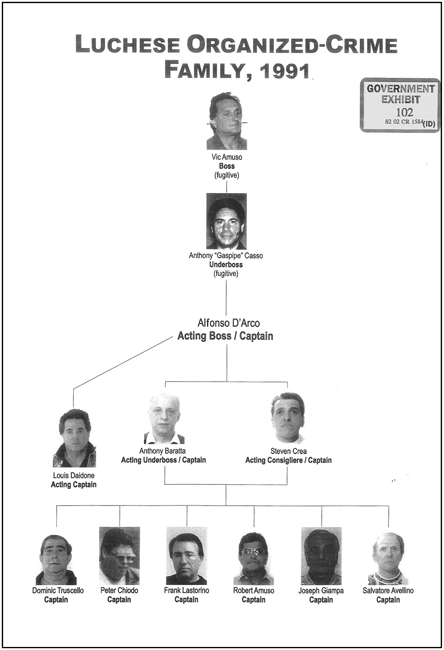
PREFACE
Alfonso Little Al DArco was the most important mob witness in an era that saw the Mafia slide into a long and bloody decline. As an acting boss of his crime family, he was the highest-ranking mobster ever to share Mafia secrets when he changed sides in 1991. His decision opened the door for others to make the same choice, including John Gottis top aide, Salvatore Sammy the Bull Gravano. Collectively, their testimony helped send the mob spiraling into near collapse.
We got to see him a lot while covering organized crime for the New York Daily News and other papers, where we broke many of the stories of his cooperation and revelations. He was the most effective and compelling witness we ever saw take the stand. He gave no excuses for his own conduct, offering a riveting account of a life of crime. What was also impressive about Al DArco was that he knew not only his own criminal story, but the history of the mob. He clearly had been a careful student of knowledgeable tutors.
So when the opportunity arose a few years ago to tell his story, we were immediately interested, provided that we could set the ground rules. First, the book would be written by us. DArco would have no right to review the manuscript, or declare any areas of his life off-limits. Second, he would have to make himself available, not always an easy prospect for someone in the witness protection program.
He agreed, submitting to hundreds of hours of interviews. He also made his wife of fifty-eight years and his oldest son, who followed him into the mob, available as well.
Like the FBI agents and prosecutors who debriefed him for even more hours, we never caught him in a lie. Telling the truth was a point of pride with him. We were steadily amazed at his accuracy. One example: When he told us how a young Jewish gangster he had known on Mulberry Street more than forty years ago had been stabbed to death in a Bronx park by Lucky Lucianos former right-hand man, we were skeptical of being able to confirm it. The murder was not only unsolved, it wasnt even listed anywhere. But after digging out the facts, the details dovetailed exactly as he had described them.
This book is based on those interviews, along with thousands of pages of court transcripts, FBI memos, affidavits, and other documents. We also interviewed more than three dozen agents, detectives, prosecutors, and defense attorneys. Any mistakes here are our own, no one elses.
Al DArcos story is many things. Its a true inside account of what was supposed to be a secret society. Its also the story of a killer whose crimes were unforgivable, no matter how much they were part of the Life, as he and his fellow mobsters dubbed the world they inhabited.
Its also a story of New York, its streets, its neighborhoods, and its residents, some infamous, some long forgotten. At one point, when Al DArcos career goal to become a made member was being blocked, he was offered a chance to skip the wait and join another family. Hed instantly have a lot of money and a big house. The catch was he would have to move to Pittsburgh. No thanks, he said. He was a New Yorker. He wanted to stay that way.
I
La Scuola delle Strade
THE CALL
On the evening of September 21, 1991, a veteran agent of the Federal Bureau of Investigation named Robert Marston got a call at his home in the Connecticut suburbs. It was seven oclock on a Saturday night and Marston and his family were just headed out the door. Neighbors were picking them up to drive them to a local church fair.
The phone rang just as the neighbors arrived. Marston picked it up in the living room as his wife and two young children went outside.
On the other end was an operator from the bureaus New York switchboard, which handled after-hours calls to the agency.
I have a call for Agent Marston, a nasal-toned operator said. Will you accept it?
He said he would. He waited a moment for the call to be patched through. On the line was someone involved in an investigation that Marston was conducting into an illegal landfill. Hed spoken to the man several times, but he couldnt imagine why he would be calling him on a weekend evening. Whatever it was, he hoped it wouldnt take long. He could see his wife chatting with their friends, casting anxious glances at the living-room window.
The caller sounded nervous and rushed. He was speaking almost in code.
Theres this guy I know and hes involved with things. Id like you to speak to him. I think he can tell you a lot, he said.
Marston asked who it was.
His name is Al DArco, said the caller.
The agent had to skip a few beats to catch up with that one. For the past year he had been trying to wrap up his probe into a dump along the Delaware River in Pennsylvania. It had started as a routine environmental-crime case. That was Marstons beat. He chased illegal dumpers, the corner-cutting trash haulers who tossed medical waste into the ocean, and toxic garbage down open mine pits.
He was part of what the bureau called a white-collar squad. They pursued crooks who stole with pen and paper, not guns. It was why the bureaus elite mob-chasing agents referred to them as the sharp-pencil guys. They were smart investigators, very good at deciphering financial records, but lacking in the street savvy needed to handle real wiseguys.
Marston wouldnt have disagreed with that analysis. He had an MBA and had been on the verge of becoming a certified public accountant when his application to the FBI had been accepted. But despite the white-collar nature of his work, several authentic wiseguys had walked into the landfill case just the same. One of them had ended up dead in the trunk of his late-model Jaguar, his blood leaching out onto the Bronx street where the car was abandoned.
On court-ordered wiretaps, Marstons team had heard dump operators voice greatest concern about someone in lower Manhattans Little Italy named Al. Whoever Al was, he was a mobster with high-level clout in the Luchese crime family, one of New Yorks five Mafia clans. Theyd eventually learned Als last name: DArco. He had done two terms in prison, one for stock theft and another for heroin sales.
Their interest had soared when theyd learned earlier that year from the bureaus Mafia specialists that DArco was serving as his crime familys acting boss. He was the pinch hitter for the familys two top figures, boss Vittorio Vic Amuso and underboss Anthony Gaspipe Casso. Both men had gone into hiding just before their indictment on racketeering charges the year before.
That was where the intelligence had stopped. They had never heard his voice on the wiretaps or spotted him in a meeting. Al DArco was someone hidden in the corners.
And now he wanted to talk to Bob Marston?
He said that of course he would speak to him. The caller said hed have DArco call Marston right back on the same number. Then he hung up.


